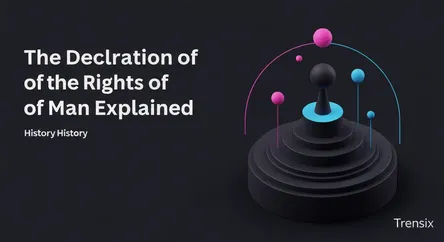History
The Declaration of the Rights of Man Explained

Discover the Declaration of the Rights of Man, the 1789 French Revolution document that defined individual liberties and inspired modern democracy.
What is it?
The Declaration of the Rights of Man and of the Citizen is a fundamental document from the French Revolution, adopted by France's National Assembly in August 1789. Inspired by Enlightenment thinkers like Rousseau and Montesquieu, it defined the "natural and inalienable" rights of all citizens. Its 17 articles famously state, "Men are born and remain free and equal in rights." These rights include liberty, property, security, and resistance to oppression. The document also established principles like the sovereignty of the nation, equality before the law, freedom of speech, and religious freedom.
Why is it trending?
This declaration is perpetually significant as a cornerstone of modern democracy and human rights. It served as the preamble to the French Constitution of 1791 and has been incorporated into modern French constitutions. Its principles had a profound global impact, influencing similar charters of liberty in Europe and Latin America. It is widely seen as a crucial predecessor to the 1948 United Nations' Universal Declaration of Human Rights. Its enduring ideals of liberty and equality continue to be relevant in contemporary discussions about governance and individual freedoms worldwide.
How does it affect people?
The Declaration fundamentally shifted political power from a monarch to the people by asserting that sovereignty resides within the nation. It affects people by establishing that all citizens are equal before the law, ending the system of aristocratic privileges. It provides legal safeguards against arbitrary arrest and ensures fair treatment in the justice system. By guaranteeing freedoms of speech, press, and religion, it empowers individuals to express themselves and participate in society. While initially limited in scope—excluding women and non-property owners from full political rights—its core principles inspired future movements for broader equality.